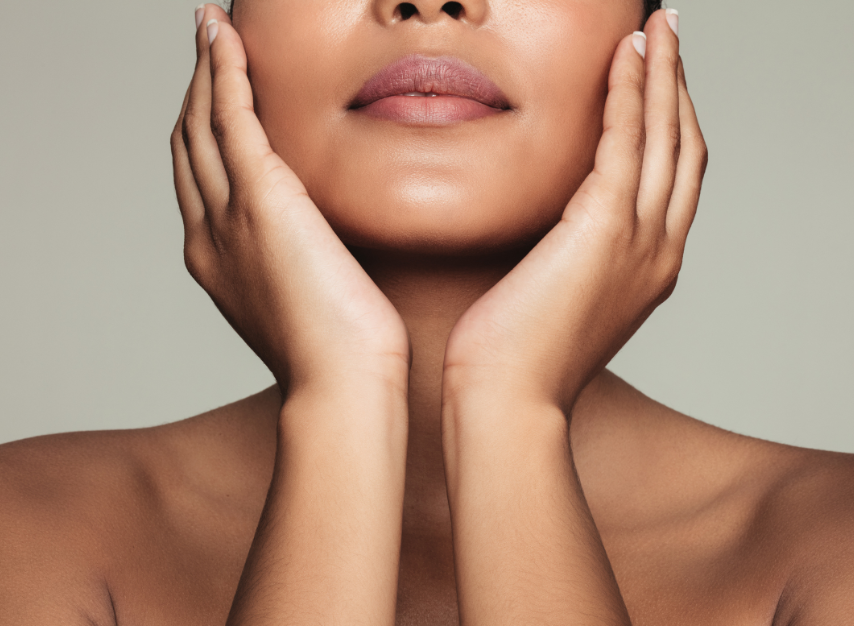
NATURAL ACNE SOLUTIONS: FOODS TO REMOVE FOR CLEAR SKIN
2 / OCTOBER / 2024
SHEREE'S HEALTH DIARIES

Acne is one of the most common skin concerns in developed nations, and it can affect people of all ages. While there are several factors that influence the presence of acne – including hormones, stress, genetics, bacteria, microbiome health and inflammation — one of the most influential and often underrated ways to support and treat acne is through diet (which is often driving the inflammation).
There is a significant amount of research to support that what you eat affects your skin, and by reducing or removing these foods I have seen significant changes in my clients prevalence of acne as well as their confidence.
UNDERSTANDING ACNE AND ITS ROOT CAUSES
Before diving into diet, it’s important to understand that acne is a complex condition. It can be influenced by hormones, stress, bacteria, your gut microbiome and even environmental factors, but inflammation is a key driver of acne development. Modern treatments like antibiotics and Accutane are often prescribed, but these can come with serious side effects, including antibiotic resistance and mental health concerns.
Luckily, there is growing research showing that a holistic approach — particularly focusing on what we eat — can be highly effective in managing and even preventing acne. So what are these foods and how do they affect your skin?
The Dairy and Acne Connection
Dairy, especially milk, has long been suspected to play a role in acne development. While dairy can be a good source of calcium and vitamin D, it also contains growth hormones and proteins that can trigger hormonal imbalances, leading to an increase in sebum production and inflammation, both of which are precursors to acne.
A 2021 study published in the International Journal of Dermatology concluded that dairy intake, particularly skim milk, is associated with an increased risk of acne, potentially due to the presence of whey proteins and growth factors . Additionally, the systemic inflammation caused by dairy can exacerbate skin conditions, making breakouts worse.
What to Do About It:
– Try eliminating or reducing dairy from your diet for a few weeks and see how your skin responds.
– Consider plant-based alternatives like almond or coconut milk that don’t contain the same hormones and proteins that might trigger acne. Or focus on raw dairy products that are less likely to contain the nasties and is much easier to digest and absorb for the body.
Omega-6 Fatty Acids: The Inflammation Trigger (aka seed oils)
While omega-6 fatty acids are essential for the body, modern diets are disproportionately high in these fats, primarily due to processed foods and vegetable/seed oils. This imbalance creates a pro-inflammatory environment in the body, which can directly influence acne formation.
A systematic review published in Lipids in Health and Disease found that an excess of omega-6 fatty acids, relative to anti-inflammatory omega-3 fatty acids, can worsen inflammatory skin conditions like acne . When you consume too many omega-6-rich foods, such as corn oil, soybean oil, and fried foods, it amplifies inflammation in the body, making skin issues harder to manage.
What to Do About It:
– Reduce your intake of processed foods high in omega-6 oils.
– Increase your consumption of anti-inflammatory omega-3s, found in flaxseeds, chia seeds, and fatty fish like salmon, to balance the ratio of fats in your diet.
High-Glycemic Index Foods and Acne
Foods with a high glycemic index (GI) — such as white bread, sugary snacks, and soft drinks — cause rapid spikes in blood sugar. These spikes prompt a release of insulin, which in turn stimulates androgen hormones and increases sebum production, both contributing to clogged pores and acne formation.
Research has consistently shown that people who consume a low-glycemic diet experience fewer acne outbreaks. A 2007 study published in the American Journal of Clinical Nutrition found that participants on a low-GI diet saw significant improvements in acne over a 12-week period . By keeping your blood sugar levels stable, you can help control hormone levels and reduce inflammation.
What to Do About It:
– Opt for whole grains, vegetables, and fruits with low to moderate glycemic indexes, such as quinoa, sweet potatoes, and berries.
– Focus on high protein foods and good sources of omega 3 fats to pair with the low-GI carbs to stabilise blood sugars.
– Limit refined sugars and carbohydrates that can trigger insulin spikes.
Holistic Skin Solutions for Clearer Skin
To get the best results for your skin, focus on adopting a balanced, anti-inflammatory diet. By reducing your intake of dairy, inflammatory omega-6 fats, and high-glycemic foods, you can create an internal environment that supports clear, healthy skin. Combine these dietary changes with other holistic practices like stress management and proper skincare for a comprehensive approach to managing acne.
While everyone’s skin responds differently, taking charge of your diet is a powerful step toward achieving clearer, glowing skin without relying on harsh medications.
If you’re wanting to get to the root cause of your acne and want my step-by-step approach to clear glowing skin from within, check out my free masterclass here to give your skin the ultimate glow up!
REFERENCES
- Smith, L. M., et al. (2021). “Dairy intake and acne: A systematic review.” International Journal of Dermatology.
- Stangl, G., et al. (2016). “Acne and Nutrition: A Systematic Review.” ResearchGate.
- Smith, R. M., et al. (2018). “The role of omega-6 fatty acids in inflammation and acne.” Lipids in Health and Disease.
- American Journal of Clinical Nutrition (2007). “Effect of low-glycemic diet on acne.” PubMed Central.
- Bowe, W. P., et al. (2016). “Diet and acne revisited: dairy and high glycemic index foods.” The Journal of Clinical and Aesthetic Dermatology.

SHEREE BEAUMONT
Holistic Nutritionist, Personal Trainer & Wellness Coach I empower women like you to transform their lives, understand their bodies and feel their best from the inside out!
